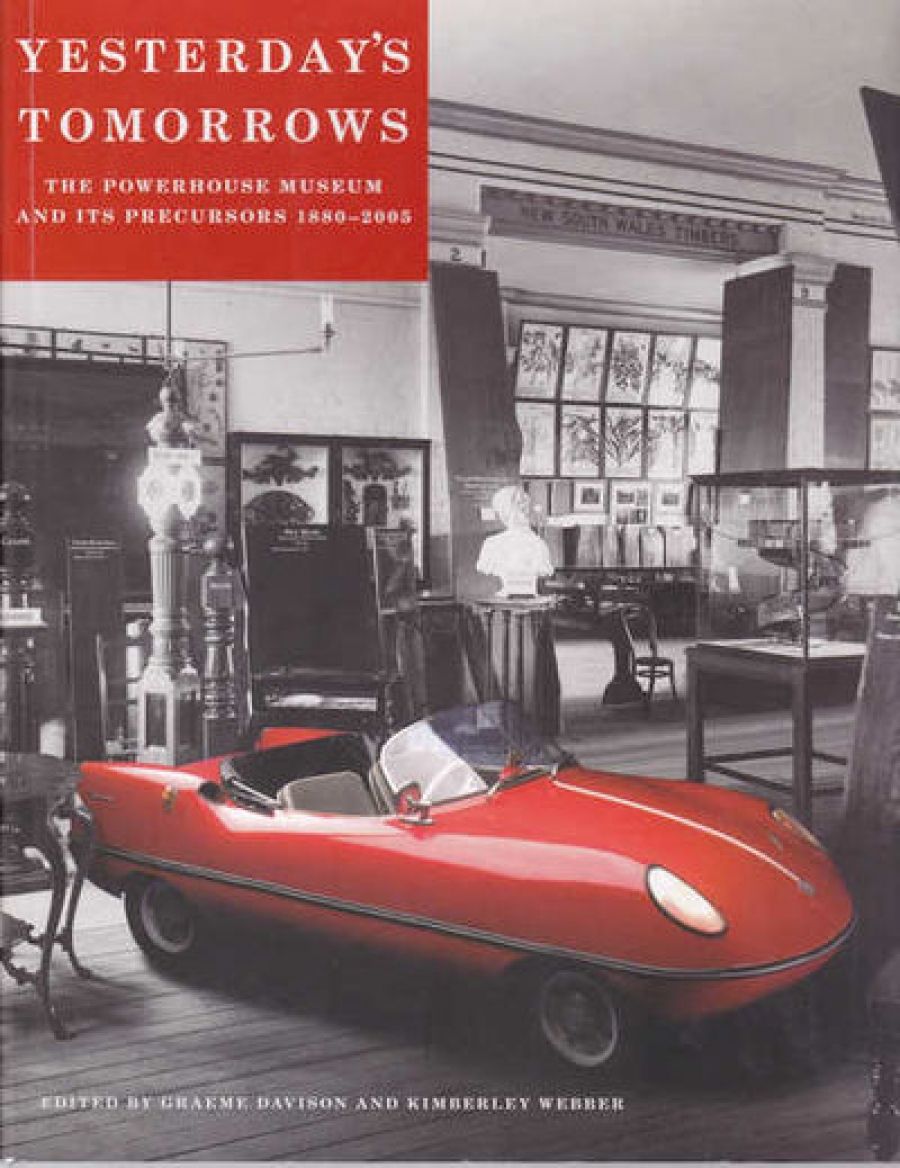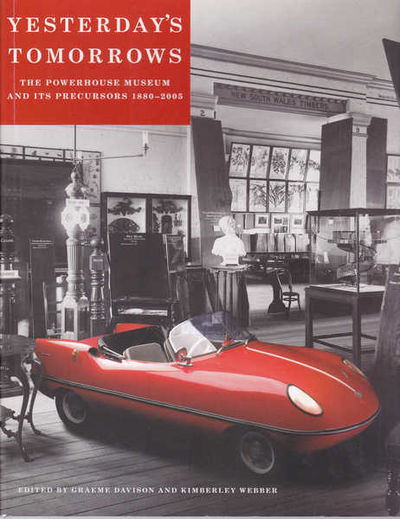
- Free Article: No
- Contents Category: Australian History
- Review Article: Yes
- Article Title: Salutatory instructions to infotainment
- Online Only: No
- Custom Highlight Text:
A book we have all been waiting for, a history we have all needed, should be assured success. In the Australian museum world, such a publication should garner acclaim, yet this review will fail to deliver the praise it anticipates. My lack of enthusiasm is not because the editors have failed to do a good job. In fact, they have brought together a wide-ranging series of essays that fascinate and illuminate just as one might wish. Telling the story of the Museum’s complex history, from its foundation in 1880 as the Industrial, Technological and Sanitary Museum, which became the Museum of Applied Arts and Sciences in 1950 and, in 1988, the Powerhouse Museum, Yesterday’s Tomorrows captures the changing times and purpose of the institution.
- Book 1 Title: Yesterday's Tomorrows
- Book 1 Subtitle: The Powerhouse Museum and its precursors 1880-2005
- Book 1 Biblio: Powerhouse Publishing & UNSW Press, $54.95 pb, 288 pp
- Book 1 Cover Small (400 x 600):

- Book 1 Cover (800 x 1200):

The history and variety of museum exhibitions, both ‘permanent’ and temporary, makes up much of the book and will provide, for many readers, its most interesting and useful text. The account of the changing purpose and attitude to displays is inherent rather than spelt out, and the book would have benefited from an account of the huge changes that have occurred in professional and public expectations of museum displays and exhibitions. After all, this is a museum that happily presents us with blockbuster exhibitions devoted to Greek art and culture, displays of the history of contraception, Audrey Hepburn’s dresses and Lord of the Rings.
Essays such as Lucy Taksa’s ‘The Museum and Technical Education’, Roy Macleod and Kimberley Webber’s ‘Applied Research and the Commercial Museum 1880–1978’ and Richard White’s ‘Representing Australia’, I found fascinating. Similarly, others devoted to particular aspects of the collection – Brigid Hains and Sandra McEwen’s ‘The Golden Fleece: New Life for a Once Lost Collection’ and Tim Sherratt’s ‘Remembering Lawrence Hargrave’ – are outstanding. However, I found the lack of information about the Museum’s decorative arts and Asian collections serious omissions. Perhaps the editors felt that two previous publications specifically devoted to the Powerhouse collections made this unnecessary (see Terence Measham, Treasures of the Powerhouse Museum, 1994, and Discovering the Powerhouse Museum, 1997, both of which, oddly, the bibliography fails to include). Short essays devoted to the work of Jenny Kee and Linda Jackson, Florence Broadhurst and Peter Chang appear tokenistic. The failure to include a specific account of the Aboriginal collections is a more serious and inexplicable omission when specific mention in the timeline celebrates the importance of the exhibition Our Place: Indigenous Australia Now, which has proudly been shown in both Athens and Beijing.
The design of the book and its production are its most disappointing aspects. Instead of appearing as exciting as it should, or could, the book starts off with a tricky cover that places a bright red convertible into a black-and-white photograph of an old museum display. Cute idea, but it just doesn’t work. This is the dullest cover for a potentially exciting book. It belongs to the 1950s and does not say ‘pick me up’. When you open the book, it goes from bad to worse.
The design fails to help unify the presentation of disparate material, in particular old and new, black and white and coloured, large and small photographs. Perhaps there are too many photographs, and too many reproduced too small. The fuzziness of some, not all of them old, suggests a poor selection, and perhaps poor production standards. This is inexcusable for a museum where design matters. In the review copy, there are pages in which the text has been over-inked, and scans of recent photographs appear pixilated. Lack of captions for many illustrations and an unpaginated section (pp.230–240) suggest that someone took their eye off the ball. These are all factors that seriously detract from what is otherwise an invaluable addition to the few published books documenting the history of museums in Australia.


Comments powered by CComment